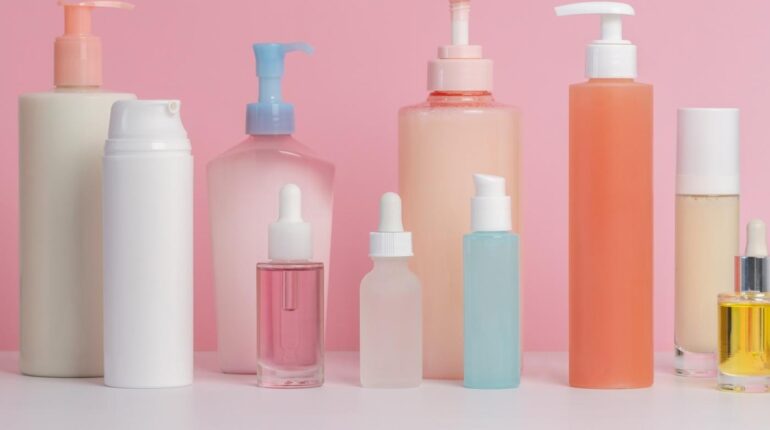📌 The shocking truth: US cosmetics contain 2,400 chemicals banned in Europe while FDA restricts only 12

Posted 21 July 2025 by: Admin
The Unregulated Beauty Industry: A Daily Dose Of Toxins
Every morning, millions of Americans unknowingly expose themselves to a cocktail of dangerous chemicals. The average adult uses 12 personal care products daily, from shampoo to makeup, resulting in exposure to an average of 168 chemicals before even leaving the house.
This staggering reality exists because beauty and personal care products sold across the U.S. are subject to little federal oversight. The industry operates in a regulatory vacuum that would shock most consumers reaching for their favorite moisturizer or mascara.
The chemical lineup reads like a toxicologist’s nightmare: formaldehyde, mercury, asbestos, lead, and parabens. These substances have been directly linked to cancer, brain damage, and reproductive harm. Yet they remain legal ingredients in products applied directly to human skin daily.
The exposure crisis hits some communities harder than others. Women of color use twice as many personal care products compared to other demographics, according to Consumer Reports data. This disparity translates into dramatically higher chemical exposure rates for those already facing health inequities.
Despite mounting scientific evidence documenting these dangers, federal action remains virtually nonexistent. While consumers assume their daily beauty routine is safe, the reality reveals an industry operating with minimal safety standards and maximum chemical freedom.
The scope of this unregulated exposure spans from nail polish to hair relaxers, creating a public health situation that demands immediate attention.
Democratic Push For Reform: The Safer Beauty Bill Package Returns
This regulatory vacuum finally faces a coordinated political challenge. On Wednesday, four Democratic lawmakers reintroduced comprehensive legislation designed to transform America’s approach to cosmetic safety.
Representatives Jan Schakowsky of Illinois, Lizzie Fletcher of Texas, Doris Matsui of California, and Ayanna Pressley of Massachusetts unveiled the “Safer Beauty Bill Package” — an updated version of their original 2021 initiative that failed to gain traction.
The package consists of four distinct bills, each targeting specific regulatory gaps that have allowed the beauty industry to operate with minimal oversight. The scope of the problem they’re addressing is staggering: more than 10,000 chemicals are currently used to manufacture beauty and personal care products.
« We owe it to consumers to ensure the beauty and personal care products they use daily are safe, » Schakowsky declared, emphasizing the fundamental responsibility government has abdicated for decades.
The lawmakers’ renewed push comes after the 2022 Modernization of Cosmetics Regulation Act (MoCRA) proved largely ineffective. While then-President Biden signed the law amid fanfare about expanding FDA authority, consumer safety advocates quickly recognized its limitations. MoCRA granted the FDA powers like mandatory recalls and adverse event reporting, but did virtually nothing to improve actual product safety.
This legislative failure drove states including Vermont, California, Washington, and Oregon to enact their own chemical bans — creating a patchwork of regulations that manufacturers must navigate while consumers remain largely unprotected.
Disproportionate Impact: Communities Of Color At Higher Risk
This patchwork protection reveals a disturbing reality: the most vulnerable communities bear the heaviest burden of toxic exposure.
Research consistently demonstrates that Black and Latina women face disproportionate risks from dangerous cosmetic ingredients. A March Consumer Reports study delivered a shocking finding: cancer-causing ingredients were present in 100% of the ten most popular synthetic hair products used in braids, extensions, and hairstyles favored by Black women.
The contamination extends far beyond specialized hair products. A study published in Environmental Science & Technology Letters revealed formaldehyde and formaldehyde-releasing compounds lurking in everyday items including soap, lotion, shampoo, conditioner, and eyeliner — products used multiple times daily.
Hair relaxers, primarily marketed to Black women, have drawn particular scrutiny after studies linked them to increased cancer risk and adverse reproductive outcomes. These products represent just one category in a broader pattern of targeted chemical exposure affecting communities of color.
The fragrance industry adds another layer of concern. A Thursday report from Breast Cancer Prevention Partners found that over 98% of fragrance chemicals either lack basic safety data or are classified as high concern by scientific authorities.
« A gaping federal labeling loophole combined with a self-regulated fragrance industry allows for dozens — sometimes even hundreds — of chemicals to hide under the words ‘fragrance,’ ‘parfum,’ ‘aroma’ or ‘flavor,’ » the report states.
This systematic exposure intensifies as girls begin using makeup and skincare products at increasingly younger ages, while breast cancer rates climb among women under 65.
The Four-Bill Solution: What’s Actually Being Proposed
Against this backdrop of systemic neglect, lawmakers have crafted a comprehensive response through four targeted bills now advancing through the House Committee on Energy and Commerce.
The Toxic-Free Beauty Act takes direct aim at the most dangerous substances, banning two entire chemical classes — phthalates and formaldehyde-releasing preservatives — plus 18 of the most hazardous individual chemicals including mercury, formaldehyde, and lead. These substances have already been prohibited by several U.S. states and the European Union.
The Cosmetic Supply Chain Transparency Act addresses the industry’s opacity by requiring suppliers to disclose ingredients and safety data to cosmetic companies, creating accountability throughout the production chain.
Meanwhile, the Cosmetic Hazardous Ingredient Right to Know Act would force companies to clearly label health risks on products and websites, with direct links to safety information for harmful ingredients.
The fourth bill, Cosmetic Safety Protections for Communities of Color & Salon Workers, allocates $10 million for research into safer alternatives and directs FDA oversight of synthetic hair products.
The contrast with international standards remains stark. While the European Union has banned over 2,400 toxic chemicals from personal care products, the FDA restricts about a dozen.
« It’s time to close the loopholes that allow toxic chemicals in the products we use on our bodies every day, » Schakowsky declared.
The legislation has garnered support from over 150 companies and organizations focused on environmental and consumer health.




















